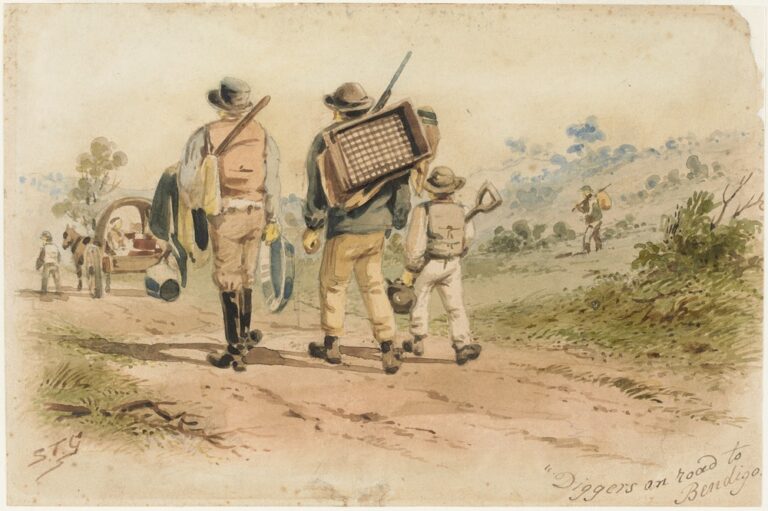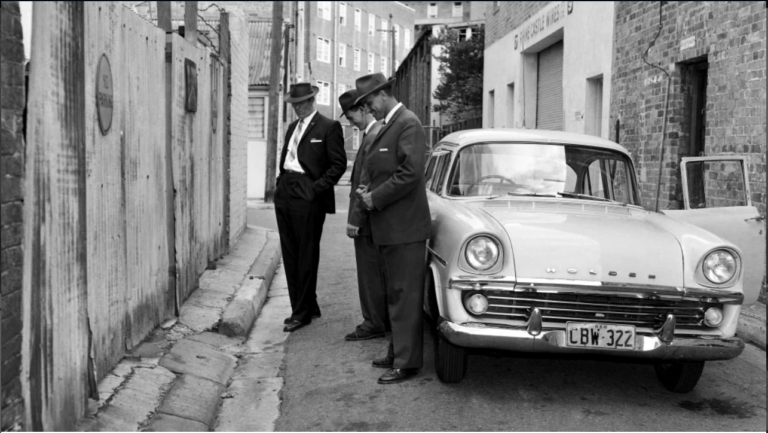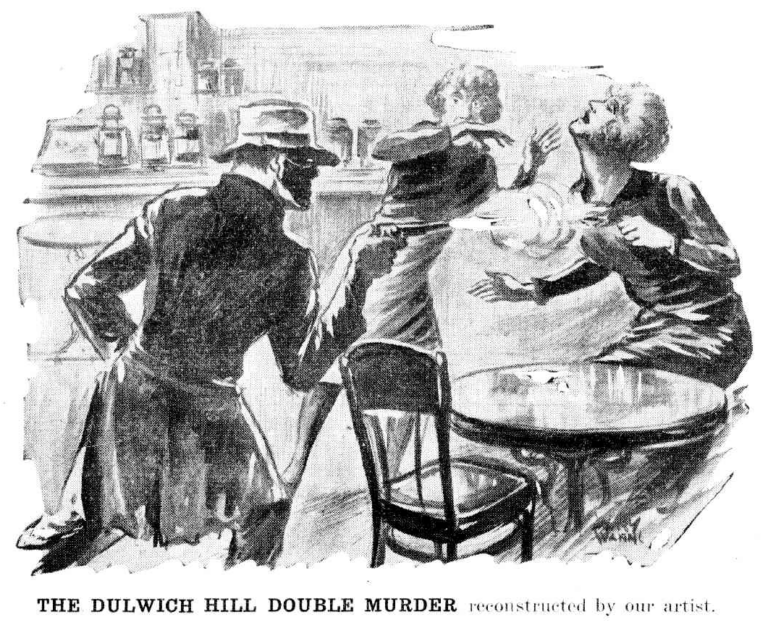
A Grim Discovery
It was a chilly Sunday morning on April 26, 1931, when Andrew Dearsley, a working-class man living in the grimy streets of Surry Hills, Sydney, made his routine stop at his neighbour’s home. Emma Philbrook, a widow in her fifties, had recently moved from her terrace at 5 Smith Street to a smaller, cheaper home at 92 Reservoir Street. Times were tough, and neighbours often helped one another out in small but meaningful ways. Andrew had brought her breakfast this morning, as he sometimes did, leaving the plate on her doorstep when she didn’t answer.
That morning, however, something felt different. Neighbours had already mentioned that Emma hadn’t been seen for a few days—something quite unusual for the normally sociable woman. Andrew’s concern grew. After leaving the breakfast, he circled around to the back of the house, hoping to find another way in. As he peered through her bedroom window, his heart skipped a beat.
Emma Philbrook was sitting on the floor, her back slumped against the bed, her face pale and lifeless. His frantic knocking on the glass went unanswered. In a surge of panic, he scrambled for help, and the authorities were quickly alerted.
When Detective Inspector William Prior of the NSW Police Criminal Investigation Branch arrived, a small crowd of concerned neighbours had already gathered outside the old terrace. The scene inside was grim. Emma’s body bore signs of a violent struggle—her face was discoloured, blood matted her hair, and a silk stocking was tied tightly around her throat. This was no accident, no simple death. Something dark had unfolded in the secrecy of her home.
The Investigation Begins
Detective Prior’s first sweep of the crime scene revealed some unsettling details. Emma had been fully clothed, but only one leg still wore a silk stocking, the other having been used to strangle her. Oddly, there were no signs of forced entry, no broken locks, no windows forced open. Emma’s home, meticulously clean to the point of sterility, seemed undisturbed—her modest valuables and a small sum of money lay untouched.
Was this a robbery gone wrong, or something more personal?
The first theory, as often with unexplained deaths, leaned toward suicide. Neighbours described Emma as a woman plagued by insomnia and deep depression. She had, on more than one occasion, spoken of taking her own life. But something about the scene didn’t sit right with Prior. The stocking tied around her throat, the blunt force injury on her head, and the fact that the doors were all locked from the inside complicated the picture.
The autopsy soon confirmed the detectives’ suspicions: Emma’s death had been caused by strangulation, the stocking wrapped tightly around her neck after she had sustained a sharp blow to the head. The post-mortem also revealed alcohol in her system. A nearby bottle of port, with only a few sips missing, was found on the mantelpiece of the fireplace. At first, this seemed inconsequential, likely just a comfort to a lonely woman. But when the bottle was examined, it bore fingerprints that weren’t Emma’s.

The fireplace where the bottle pf port was found.
A Woman with Secrets
As the investigation deepened, neighbours’ whispers grew louder. It seemed Emma Philbrook, known affectionately (or infamously) as “Old Kate,” had lived a life filled with shadows. Though friendly and well-liked, she had a darker side. She had been seen frequently in the company of strange men, some of whom were less than reputable. She was known to drink excessively and was rumoured to have dabbled in prostitution to make ends meet.
The idea that Emma had crossed paths with dangerous figures added another layer to the mystery. Had one of these men killed her in a fit of rage? Had she been caught up in something far beyond her control?
Detective Prior’s instincts told him that Emma had been involved with the wrong sort of people. One neighbour mentioned a male friend who had threatened Emma a year earlier, and she had feared for her life ever since. Could this man be the killer? As Detective Prior gathered witness statements, he became more convinced that someone in Emma’s past had sought revenge.
But the question remained: who?
A Break in the Case
Weeks passed, and the investigation seemed to stall. Then, in a stroke of luck—or perhaps dogged determination—Detective Prior found a shopkeeper who remembered selling a similar bottle of port to a man on the day Emma was presumed to have died. The fingerprints from the bottle led the investigation to a suspect—a Swedish sailor named Gustav Heimer Reichardt, a drifter who had been staying in Sydney.
The hunt for Reichardt was on. For months, Prior tirelessly tracked him, following leads from Sydney to the far reaches of Queensland. Finally, in mid-July, Detective Prior and Detective Sergeant Sedgwick caught up with the elusive sailor in Townsville. Reichardt, who had fled Sydney shortly after Emma’s death, was taken into custody and brought back to face justice.

The Accusations and the Confession
Upon his return to Sydney, Reichardt was questioned extensively. At first, he denied any involvement with Emma’s death, claiming he didn’t even know her. But as the evidence mounted, including the fingerprints on the port bottle and a witness who had seen him in the area, the pressure began to build.
Eventually, a confession was obtained. In his statement, Reichardt described the tragic events of that night. He admitted that he had gone to Emma’s home, hoping to buy beer. Emma, he claimed, took his money but then admitted she had no beer, offering herself to him instead. When he demanded his money back, an argument ensued. In the heat of the moment, Reichardt said he struck her in a fit of rage. When Emma began to scream, he panicked and wrapped her own stocking around her throat to quiet her. He had not intended to kill her, he insisted—it had all been an accident.
The confession seemed to seal Reichardt’s fate. The trial was set, and the press dubbed the case the “Silk Stocking Murder.”
But Reichardt had a different story to tell.
Accusations of Verbaling
As the trial approached, Reichardt’s defence took an unexpected turn. In court, he retracted his confession, claiming that the police had coerced it through a practice known as “verbaling.” In modern terms, “verbaling” refers to when police fabricate or manipulate statements to incriminate a suspect, often adding damning details that the suspect did not actually say.
Reichardt alleged that Detective Prior and Sergeant Sedgwick had tricked him into making the confession by confusing him with questions about another incident involving a different woman. According to Reichardt, the detectives deliberately misled him, using the name “Little Emma” when referring to Emma Philbrook and another woman he had encountered. In the end, he claimed, he had been manipulated into confessing to a crime he did not commit.
Reichardt’s defence lawyer seized on this argument, accusing the police of fabricating evidence and exploiting the suspect’s vulnerability. Reichardt, who had already admitted to hitting a different woman in Stanmore, argued that his confession had been twisted to implicate him in Emma’s death.
The trial now became as much about police conduct as it was about the murder itself. Was Reichardt a cold-blooded killer, or had he been framed by overzealous detectives eager to close the case?
The Verdict
Despite Reichardt’s claims of police foul play, the evidence against him was strong. The fingerprints on the port bottle, the witness statements placing him near Emma’s home, and the detailed confession he had signed all pointed to his guilt. While the jury acknowledged the possibility of a scuffle gone wrong rather than premeditated murder, they found Reichardt guilty of manslaughter. The judge sentenced him to eight years of penal servitude.
The case of Emma Philbrook’s murder faded from the headlines, overshadowed by other scandals and crimes, but it left a haunting mark on the community of Surry Hills. Reichardt’s accusations of verbaling remained a point of contention—did the police manipulate the confession to secure a conviction, or was the sailor trying to evade justice for his crime?
As in so many cases, the truth was likely somewhere in between. For the people of Surry Hills, though, the sordid tale of Emma Philbrook’s death and the Silk Stocking Murder became another dark chapter in the neighbourhood’s troubled history—a mystery whose answers still left room for doubt.
As Reichardt served his sentence, the whispers of what really happened in that dimly lit terrace on Reservoir Street never fully died. Some believed justice had been served; others wondered if the law had taken shortcuts in its pursuit of the truth. In the end, the story of Emma Philbrook remained as tangled as the winding lanes and dark alleys that defined Surry Hills itself.
NSW HSIE Crime & Punishment Tour
Emma Philbrook’s story was completely forgotten until it was uncovered by historian Elliot Lindsay and included in the Murders Most Foul True Crime Walking Tours. The Philbrook case is part of a tour designed for NSW Crime & Punishment HSIE elective history students.










